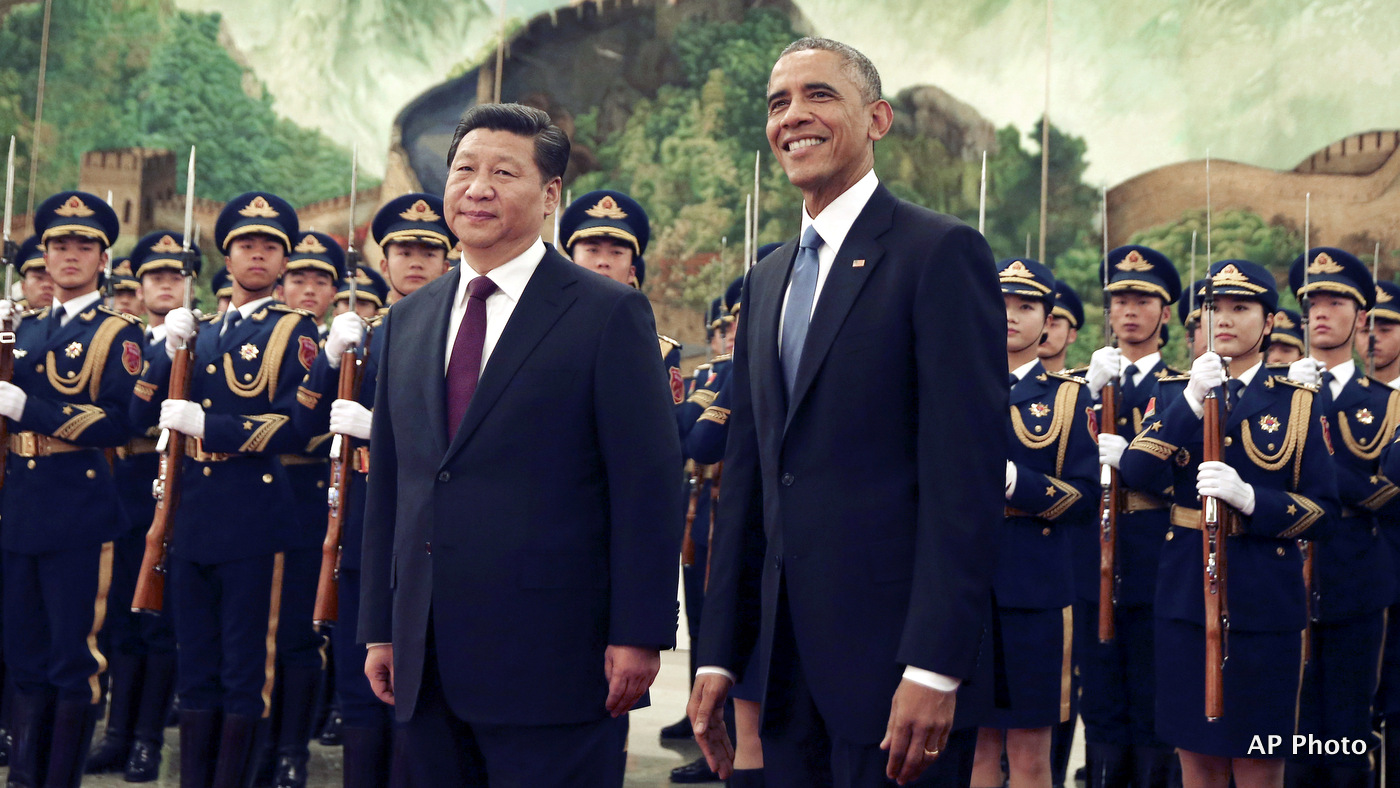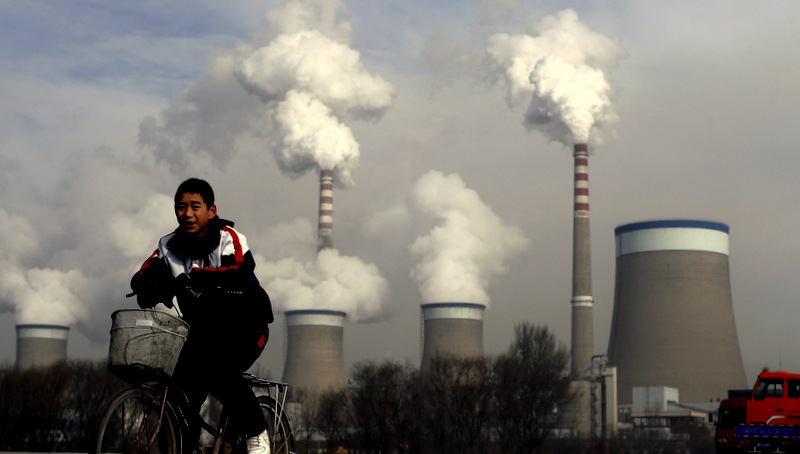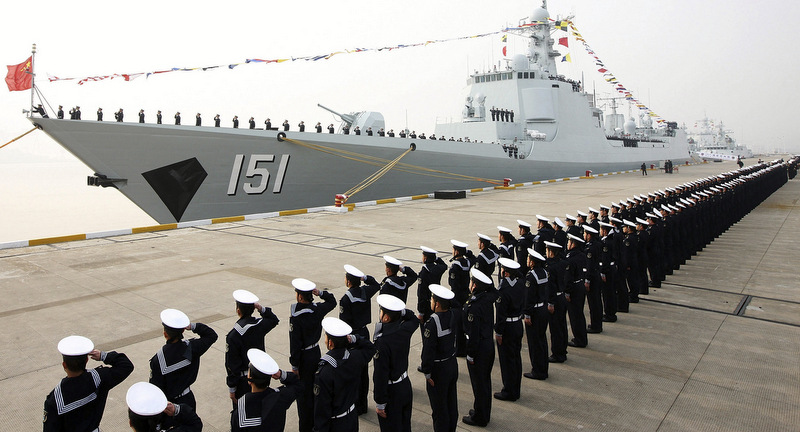 Barack Obama, right smiles as a group of children wave flags and flowers during a welcome ceremony held by Chinese President Xi Jinping at the Great Hall of the People in Beijing, China.
Barack Obama, right smiles as a group of children wave flags and flowers during a welcome ceremony held by Chinese President Xi Jinping at the Great Hall of the People in Beijing, China.
WASHINGTON — The United States is currently in a state of relative decline but not absolute decline, contends Joseph Nye, Distinguished Service Professor at Harvard University.
Nye spoke at Washington’s Wilson Center, a think tank created by Congress in 1968, on April 21 to make the case for his new book, “Is the American Century Over?”
To argue his points, he compared the U.S. to the decline of Rome — a common correlation made in media and among historians. But, Nye said, “The analogy that we’re like ancient Rome is just simply not sustainable.”
Rome didn’t succumb to the rise of another empire. Roma was unable to defend itself against the Barbarian invasions and suffered from internecine warfare, he said, noting that people were also killing each other. “We haven’t done that in this country, not since 1865,” he added.
Despite these differences, Nye says there’s still a case to be made that the U.S. is in relative decline and has been for quite some time.
At the beginning of the 20th century, the U.S. controlled a quarter of the world’s economy. By mid-century it controlled nearly half because of the devastation wrought by WWII on other developed economies, and the U.S. was back to controlling only about 25 percent of the world economy by the end of the century.
He shared International Monetary Fund estimates that the U.S. will control about 18 percent of the world’s product in the 2020s. This means that, economically, the U.S. is in decline.
Economic power and entropy
 A Chinese boy cycles past a cooling towers of a coal-fired power plant in Dadong, Shanxi province, China.
A Chinese boy cycles past a cooling towers of a coal-fired power plant in Dadong, Shanxi province, China.
Nye says power can be measured three different ways: economic, military and soft power.
According to IMF estimates released in October, China surpassed the U.S. to become the largest economy in the world in terms of purchasing-power parity (PPP).
The U.S. is still the world’s largest economy in terms of actual dollar amounts, but the PPP measurement looks at the strength of a country’s currency in terms of what it can purchase. The IMF describes the measurement this way: “If a hamburger is selling in London for £2 and in New York for $4, this would imply a PPP exchange rate of 1 pound to 2 U.S. dollars.” Thus, China only overtook the U.S. in terms of the power of its currency, the yuan, to buy goods and services.
Nye takes contention with the suggestion that this should be interpreted as China overtaking the U.S. economically. The PPP measurement compares the welfare of different countries, but when thinking in terms of power, he argued: “You don’t import jet engines or oil in purchasing-power parity, you import it at the exchange rate, and at the exchange rate, the U.S. is still considerably ahead of China.”
Yet he admits that China will likely overtake the U.S. in terms of GDP in the near future. In evaluating an economy in terms of power, he says, it doesn’t matter whether this shift occurs in 2019, as the Economist suggests, in 2027, as Jim O’Neill, the retiring chairman of Goldman Sachs Asset Management, has said, or in the late 2050s, as the Rand Corporation’s Charles Wolf has estimated.
Nye urges examining an economy’s “sophistication.” For that, he explained, GDP per capita is the important measurement to look at. He imagines that China’s GDP per capita will only be about one-third of the U.S. economy at the time its total GDP overtakes the U.S.
This is a point other economists have made as well to assuage concerns that China is becoming increasingly powerful. Yet, as one audience member pointed out, this ignores the fact that China is so large that even with a significantly smaller GDP per capita income, the country could contain within it a much larger middle class country.
However, Nye was using GDP per capita as a surrogate for a broader idea about a sophisticated economy. This includes a monetary system with deep and broad markets that ensures the exchange of capital for economic growth without being inhibited by politics, and includes a rule of law to govern those markets.
Nye argues that the U.S. has those qualities, while China does not. But when China does develop those deeper capital markets and matches them up with the rule of law, which could happen as the country’s GDP per capita increases, the yuan will become a real competitor with the U.S. dollar.
That China is rising or that U.S. domestic output is in decline aren’t the real problems, though, Nye says. The real problem is the emergence of state and non-state actors, such as the Islamic State of Iraq and Syria (ISIS) and cyber criminals, who make it difficult to reach goals the way the U.S. is accustomed to: through influence and organizing actions that benefit the U.S.
Describing this weakening of American world order as “entropy,” Nye said: “My own view is that entropy is a bigger challenge than China.” To counter this dilemma, Nye advocates building stronger relationships and alliances with countries, including China.
Another question
When asked about Nye’s theories, Andrew Bacevich, author of “The Limits of Power: The End of American Exceptionalism,” told MintPress News that he believes Nye is asking the wrong question.
“The more of our energy that we waste on whether or not we’re in decline, or whether or not we’re more powerful, or falling behind the Chinese, or falling behind somebody else strikes me as almost besides the point,” Bacevich said.
He explained that international relations are not a zero-sum game in which there is one winner and the rest are losers. He describes Nye’s question as being “beside the point because the question shouldn’t be about whether or not the U.S. is losing or gaining power.”
“The question is: How do we use it? And I’m sorry to say, the record for the past 30 years or more has been that we use our power recklessly and foolishly – that’s the problem.”
Soft power
Meanwhile, Nye defines soft power as the ability to get what one wants through attraction and persuasion, rather than coercion and payment. Both President Xi Jinping and his predecessor, Hu Jintao, have set soft power initiatives as a priority for China, and Beijing has been spending billions to promote these initiatives.
Nye argues that China has not mastered these soft power skills yet, as evidenced by polls showing that its soft power is not very strong in Europe, Asia, North America and Australia.
Another problem for China, he says, is that it the country is not willing to unleash the talents of its civil society. The Chinese Communist Party’s control inhibits freedom. In contrast, he said, “A lot of American soft power is produced not by the government … it’s produced by American universities, foundations, and institutions like this one [the Wilson Center].”
Yet Nye seems to be overlooking some important regions where China’s soft power initiatives are strong, including Africa and Latin America. In a 2013 opinion piece for The Diplomat, Trefor Moss writes: “China has little attractive power – in the West. But then not everyone is watching China through Western eyes.”
Moss urges viewing China through the lens of countries that it interacts with, and an assortment of countries in Africa provide the best case study for this. He writes:
“China’s involvement in Africa is often interpreted as a cynical resource-grab – but mainly by Westerners. In fact, Chinese involvement in Africa – which has mainly taken the form of co-operative development, rather than aid – is much older and more constructive than many people realize. It goes back to the 1950s, long before the advent of Confucius Institutes or the launch of Hu Jintao’s soft-power agenda.”
Based on a literature review he conducted on the subject, Moss concludes that authors who studied the topic agree that many Africans are “receptive” to China’s approach to development and appreciative that the Chinese are not as paternalistic as many Western countries.
“Africa is not the only place from which China looks appealing,” he wrote. “Its soft power also draws people in Latin America, Eastern Europe and parts of Asia, where the popular impression of China might contrast favorably with the general perception of the West, or where Beijing might be seen as a welcome partner in tough financial times, or as a trusted long-time ally.”
Military power
 Chinese People’s Liberation Army navy personnel salute in front of a new Type 052C guided missile destroyer Zhengzhou during its commission ceremony in Zhoushan, in eastern China’s Zhejiang province. (AP Photo)
Chinese People’s Liberation Army navy personnel salute in front of a new Type 052C guided missile destroyer Zhengzhou during its commission ceremony in Zhoushan, in eastern China’s Zhejiang province. (AP Photo)
At least in terms of expenditures, the U.S. dominates the world in military power and will continue to do so. The Intercept reported last week: “[T]he U.S. spends more on its military than the next seven top-spending countries combined.” That information came from the Stockholm International Peace Research Institute (SIPRI).
The next top military spender is China, which is increasing its expenditures at double-digit rates. Thus, the gap between these two countries’ military expenditures will narrow and eventually close, Nye says.
“But,” he added, “as China looks ahead in its military capacity it’s going to have a very significant regional capacity, particularly in the seas near its borders. It’s not clear that it’s going to have a global capacity. So it might be able to defend its oil imports through the Straits of Malacca. I doubt that it’s going to be defending the Straits of Hormuz.”

